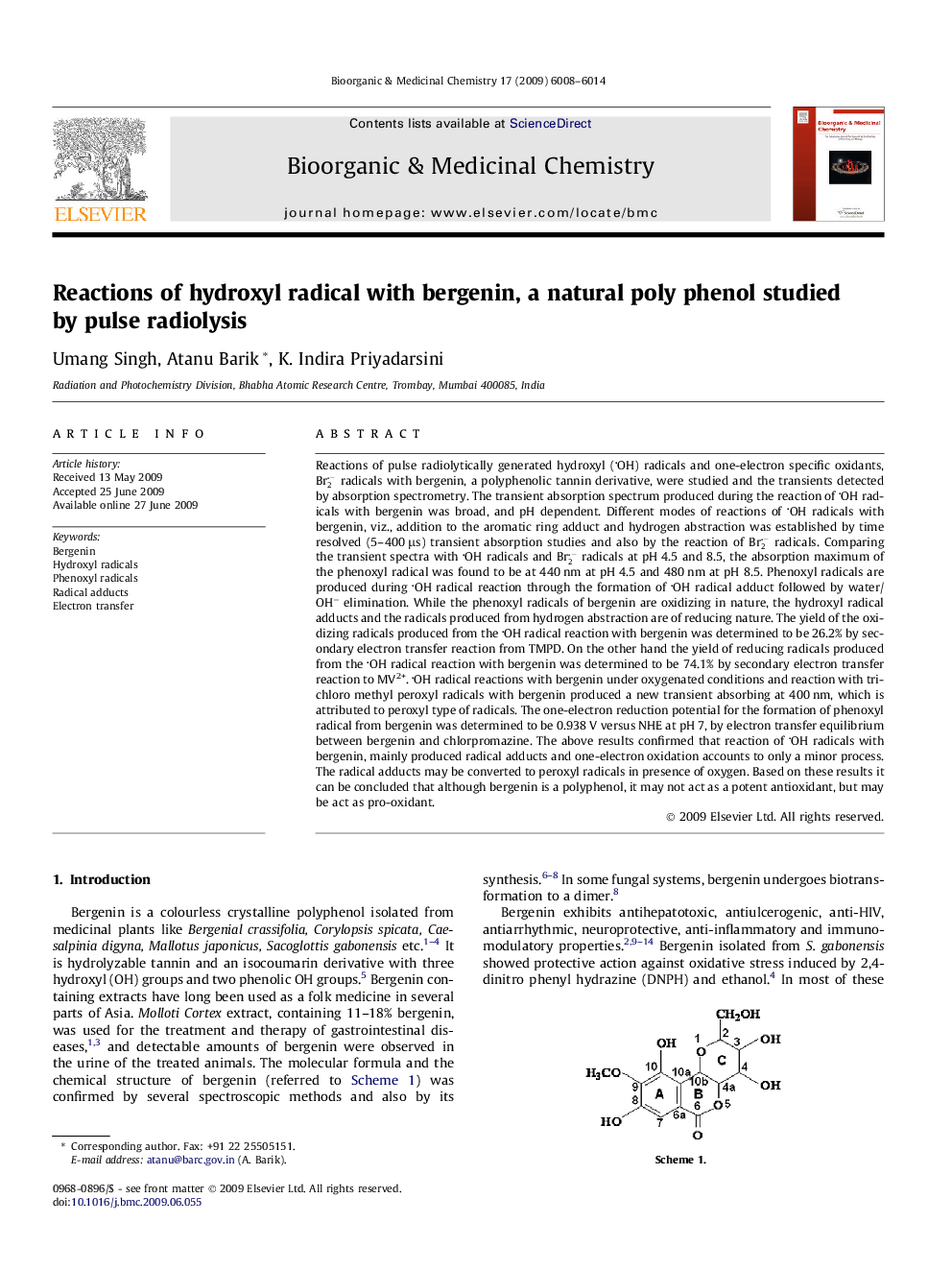| کد مقاله | کد نشریه | سال انتشار | مقاله انگلیسی | نسخه تمام متن |
|---|---|---|---|---|
| 1363155 | 981504 | 2009 | 7 صفحه PDF | دانلود رایگان |

Reactions of pulse radiolytically generated hydroxyl (OH) radicals and one-electron specific oxidants, Br2- radicals with bergenin, a polyphenolic tannin derivative, were studied and the transients detected by absorption spectrometry. The transient absorption spectrum produced during the reaction of OH radicals with bergenin was broad, and pH dependent. Different modes of reactions of OH radicals with bergenin, viz., addition to the aromatic ring adduct and hydrogen abstraction was established by time resolved (5–400 μs) transient absorption studies and also by the reaction of Br2- radicals. Comparing the transient spectra with OH radicals and Br2- radicals at pH 4.5 and 8.5, the absorption maximum of the phenoxyl radical was found to be at 440 nm at pH 4.5 and 480 nm at pH 8.5. Phenoxyl radicals are produced during OH radical reaction through the formation of OH radical adduct followed by water/OH− elimination. While the phenoxyl radicals of bergenin are oxidizing in nature, the hydroxyl radical adducts and the radicals produced from hydrogen abstraction are of reducing nature. The yield of the oxidizing radicals produced from the OH radical reaction with bergenin was determined to be 26.2% by secondary electron transfer reaction from TMPD. On the other hand the yield of reducing radicals produced from the OH radical reaction with bergenin was determined to be 74.1% by secondary electron transfer reaction to MV2+. OH radical reactions with bergenin under oxygenated conditions and reaction with trichloro methyl peroxyl radicals with bergenin produced a new transient absorbing at 400 nm, which is attributed to peroxyl type of radicals. The one-electron reduction potential for the formation of phenoxyl radical from bergenin was determined to be 0.938 V versus NHE at pH 7, by electron transfer equilibrium between bergenin and chlorpromazine. The above results confirmed that reaction of OH radicals with bergenin, mainly produced radical adducts and one-electron oxidation accounts to only a minor process. The radical adducts may be converted to peroxyl radicals in presence of oxygen. Based on these results it can be concluded that although bergenin is a polyphenol, it may not act as a potent antioxidant, but may be act as pro-oxidant.
Figure optionsDownload as PowerPoint slide
Journal: Bioorganic & Medicinal Chemistry - Volume 17, Issue 16, 15 August 2009, Pages 6008–6014